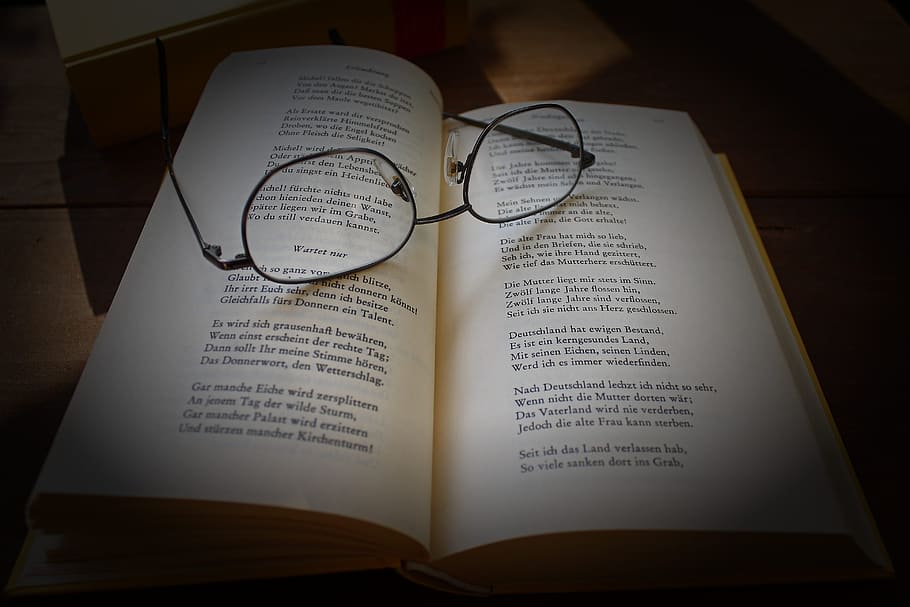6/14 Practice Circle: The Power of Poetry

I’ve been a poetry geek since I was a kid, and the poetry I liked best was the most mysterious. T.S. Eliot, Ezra Pound, Wallace Stevens, were utterly indecipherable to me at 14 – and even years later, after I got a graduate degree in this stuff, it’s still hard for me to understand what Emily Dickenson is talking about much of the time. But when I was young, that mystery was part of the beauty, and drew me back to my favorite poems again and again.
As postmodernism triumphed in the English Department in the 1990s, my love of poetry became hard to defend. The modernist poets I grew up on were roundly reviled, their ideas about universal values and classical beauty all pretty much trashed. Too white, too male, too elitist. Simply regurgitating the memes of the dominant culture. Why read it, let alone write it?
I pretty much stopped reading and writing poetry for many years. By the time I got my masters, I had no idea what poetry could possibly be for, and so I left it behind.
So I have been greatly heartened by the prominence of poetry in the mindfulness movement. When I first attended MBSR classes in 2008, the corpus was pretty small. One could count on hearing Coleman Barks’ Rumi “translation,” ”The Guest House,”. Derek Walcott’s “Love After Love” has been read at every retreat I ever attended. Naomi Shehab Nye’s “Kindness” and Mary Oliver’s “The Wild Geese” and “The Journey” also made regular appearances. These poems all have fairly obvious points to make that support the teachings of the MBSR curriculum, and their repetition made them into canonical works, poems that could be referred to by anyone in the community because they were familiar to all. Practice Circle attendees have heard me read them many times.
Over the years, the body of poems shared in mindfulness settings has grown. Today, there are several anthologies of poetry specifically for use in mindfulness classes (I own three of them myself.) I suspect the use of their work in these classes is at least partly responsible for Mary Oliver and Barks’ Rumi translations being huge best sellers. It delights me to see so many of my fellow Americans caring about poetry.
This development shouldn’t surprise us. From the earliest days, poetry has been used by Buddhists to teach doctrines and express spiritual understanding. The poems collected in the Dhammapada are believed to have been composed to teach Gotama’s ideas to new monastics and lay people. The great thinkers of the Mahayana tradition, like Nagarguna, wrote their works in verse. Each of the koans in the Chan classic, the Blue Cliff Record has a verse of commentary dedicated to it. . Haiku, like calligraphy and flower arranging, were used in Zen as the perfect, spontaneous expression of awakening. And spiritual seekers in virtually all of the world’s wisdom traditions have expressed their teachings and their realization in verse. We have Rumi’s work today because the great Sufi poets are beloved by people of all walks of life in the Middle East and East Asia. So it’s natural that poetry would find its place in Buddhism’s latest iteration.
Certainly, the striking imagery of these poems helps us understand and remember key mindfulness teachings. But I think there’s more to it. All of these poems have more than a hint of mystery to them. What does Walcott really mean when he invites us to “peel your own image from the mirror”? In “Kindness”, what is the significance of the bus full of South American peasants, or the white serape worn by the dead man on the side of the road? When Mary Oliver instructs us that “You only have to let the soft animal of your body/ love what it loves,” how do we take her advice?
Even beyond the teaching of specific mindfulness ideas, the mystery of poetry teaches the most important lesson of all. It invites us into the space of unknowing, where identities and preconceptions must be momentarily suspended. A good poem reintroduces us to beginner’s mind and invites our hearts to leap across the gap of strangeness to touch the humanity of others. When the words of a familiar poem are read aloud in community, the act becomes like a ritual, performing our shared values and aspirations. The mystery of poetry binds us as a sangha.
The great blessing for me personally is that the mindfulness movement showed me what poetry could be for and introduced me to new ways to read and write it. It’s like reconnecting with a childhood friend.
When Practice Circle meets this Sunday evening, we’ll share some poetry. Please bring your favorite to read to us.
Since 2012, the SBA has offered Practice Circle, our online practice community. We meet on the second and fourth Sundays of every month at 8 p.m. Central. It’s free, and everyone is welcome. Just click on this link Sunday evening to attend.
